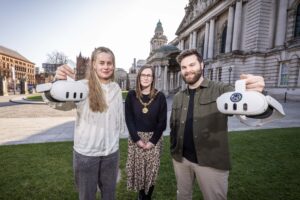Data in latest progress report shows effective reduction of nitrogen dioxide levels in the city, as part of council’s efforts to tackle risks to public health
The Clean Air Zone was launched in Birmingham in 2021 by the city council, concerned by poor air quality in the region and the associated impact on public health. The scheme was designed specifically to address levels of the air pollutant NO2 – and to do so quickly. The results are encouraging.
The city council has issued a second progress report, this time based on data from the Annual Air Quality Status Report for 2022 as well as the network of automatic number plate recognition (ANPR) cameras that support operation of the Clean Air Zone. So what does the report show?
In 2022, average levels of NO2 in the Clean Air Zone were 17% below those of pre-Covid 2019, and 37% below those of 2016 – when the original modelling for the Clean Air Zone was conducted.
What’s more, just 6% of vehicles entering the zone were non-compliant in June 2023, compared to 15.2% in June 2021 (a reduction in non-compliance of 60.5%). That’s despite an increase in the average number of unique vehicles entering the zone every day, with 102,393 vehicles daily (June 2022 – May 2023) compared to 98,112 in the first year the scheme ran (June 2021 – May 2022).
For all that levels of NO2 are reducing, data also shows that in two areas within the Clean Air Zone – the Moor Street interchange and Saint Chads Queensway – levels of NO2 continually exceed the legal limit. Three locations on the A4540 Middleway are also currently above the legal limit.
This obviously means more work must be done to improve air quality. Work has already been undertaken into why these sites exceed the limits. The suggestion is that vehicle volume and other environmental factors are to blame but more work is needed to understand the scale of response needed.
Non-compliant vehicles must pay a fee to enter the city’s Clean Air Zone and all revenues generated are used to pay for the operation of the scheme, with any surplus reinvested in local transport and related efforts to further improve air quality. To date, that has meant some £57m has been put into projects including a trial of hydrogen buses, upgrades to the university train station and improvements to stations on the Camp Hill line. The Cross-City Bus Scheme, the Car Free School Streets programme, the Birmingham Cycle Revolution and the Brum Breathes Fund have also been beneficiaries of the Clean Air Zone.
Cllr Liz Clements, Cabinet Member for Transport at Birmingham City Council, says: ‘Tackling the health inequalities caused by poor air quality is vitally important, so it’s encouraging to see that the levels of nitrogen dioxide in the city centre are continuing to reduce. I want to thank everyone in the city who has helped to make this change possible. However, there is more work to do.
‘There are now far fewer of the most polluting vehicles entering the city centre. But we have to find ways to support and encourage more people to leave their vehicle at home more often. An overall reduction in the volume of vehicles driving through the city centre will help improve air quality, reduce carbon emissions and create a more enjoyable environment for everyone.’
In related news:
Bradford Clean Air Zone leads to lowest levels of air pollution ever
Good Technology: Getting to grips with gizmos that promise us better air at home

















Leave a Reply